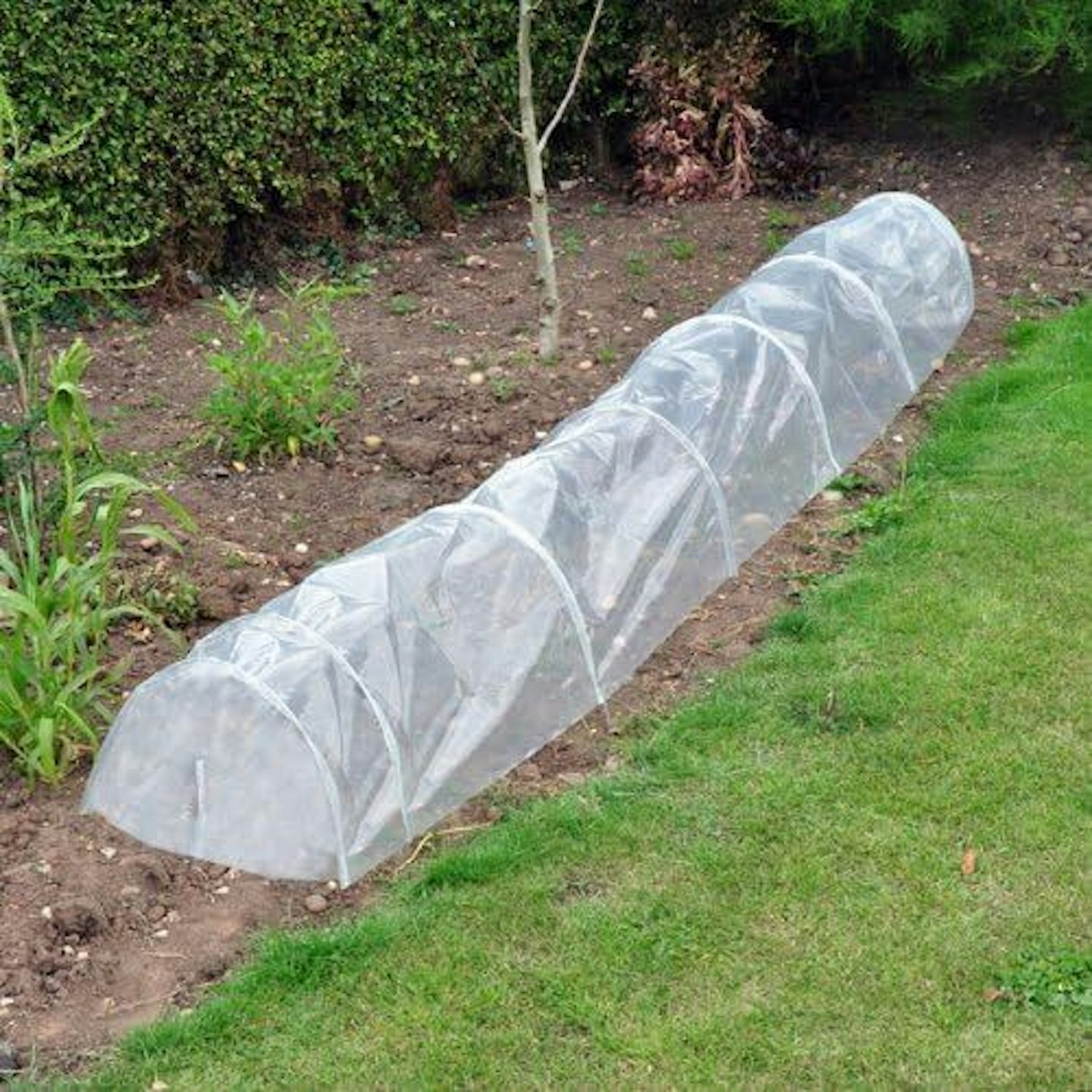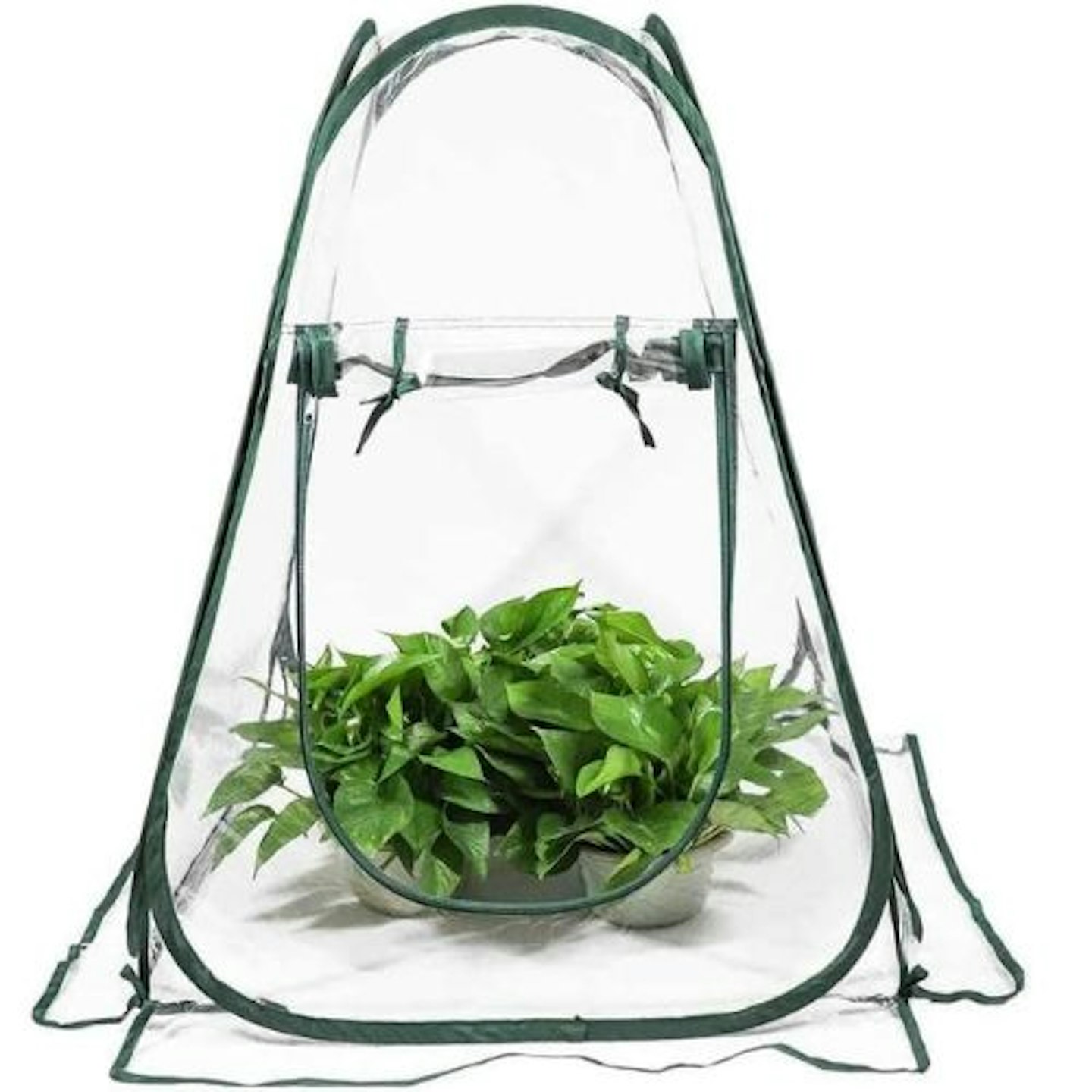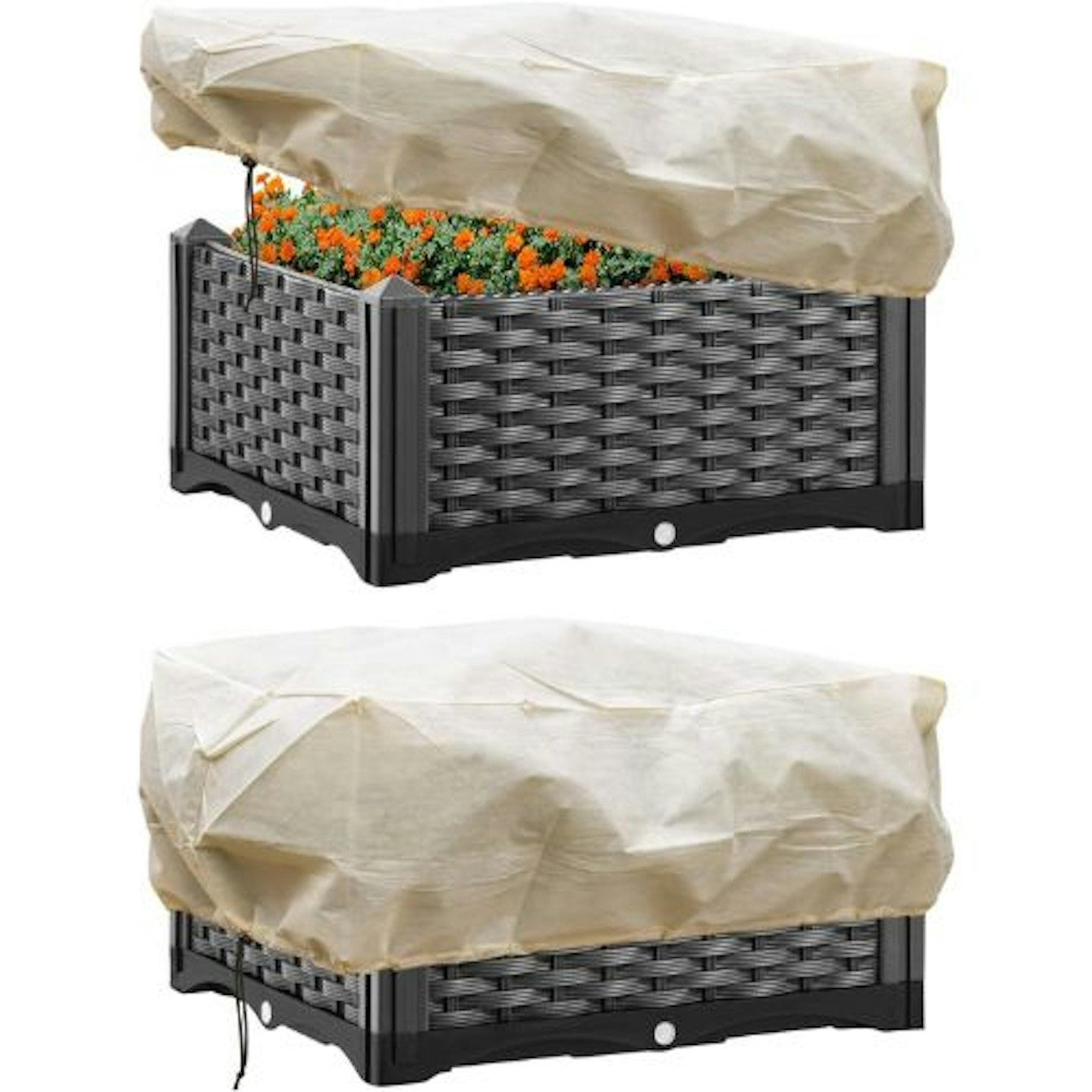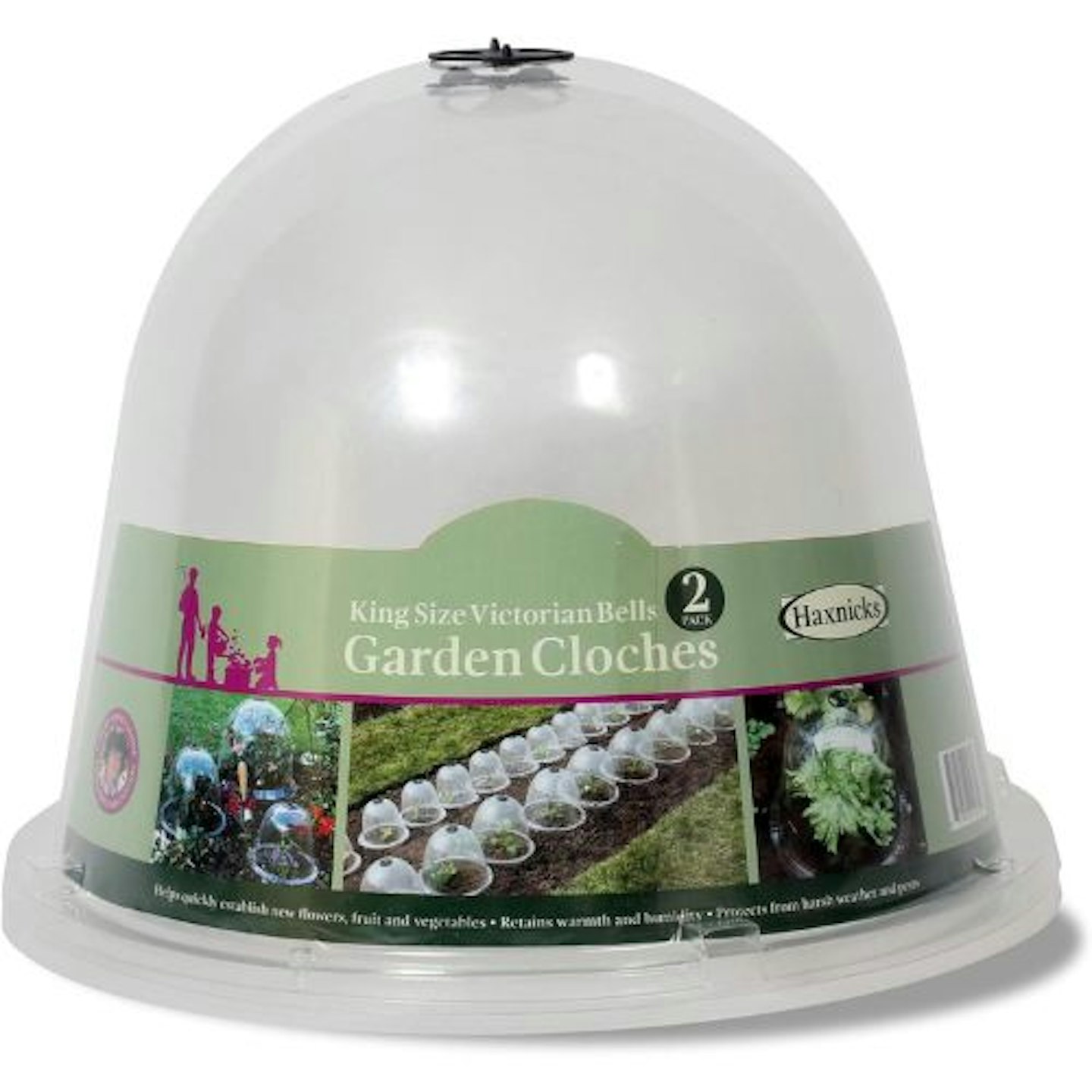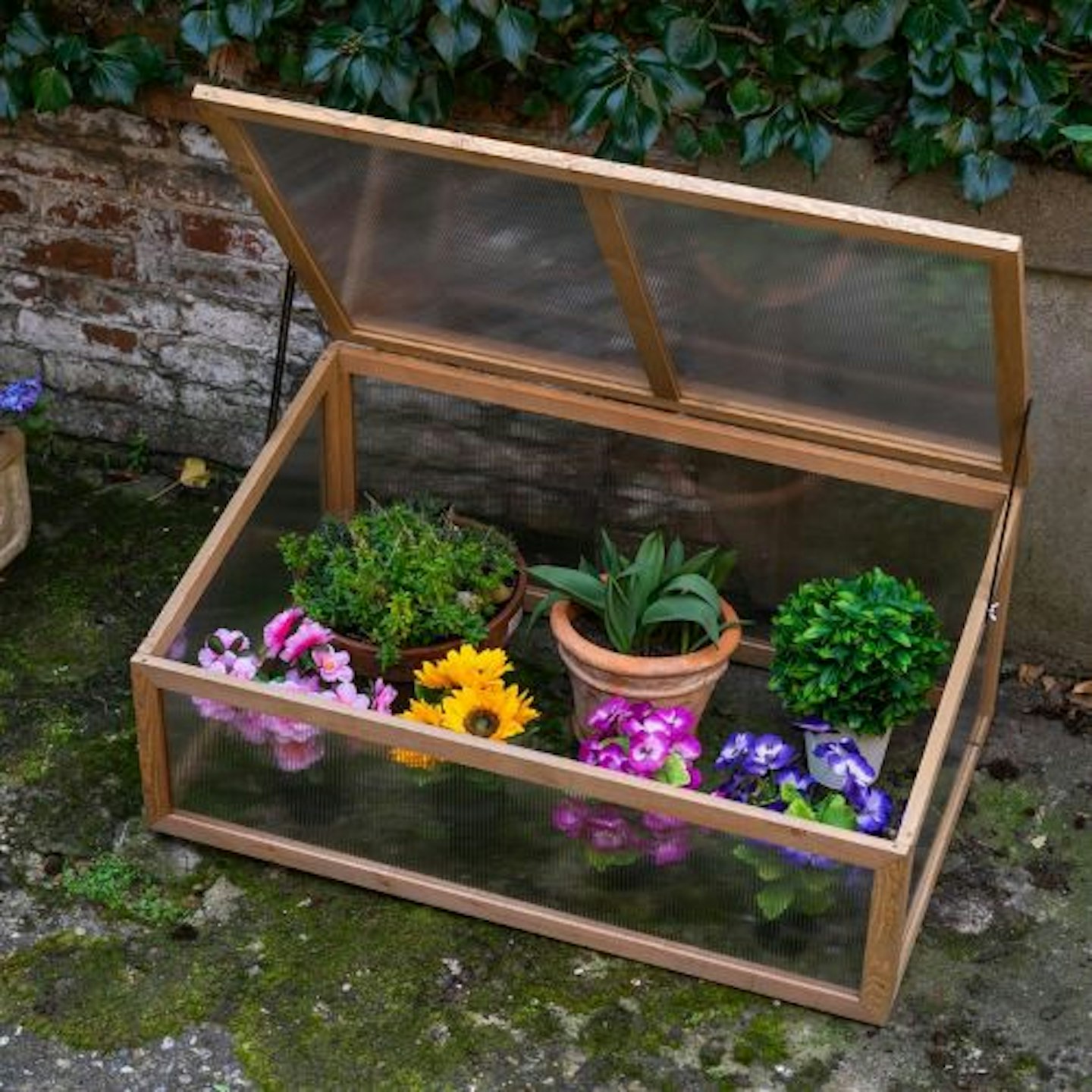Plant covers for winter are a savvy investment for anyone who loves what's growing in their outdoor space. If you've spent all spring and summer nurturing your garden it can be pretty disheartening when the winter weather kicks in and you see the fruits of your labour struggling with freezing rain, ice, and even snow.
You can give your winter plants a helping hand through the colder months of the year by investing a small amount in plant cover to shield them from the worst of what the winter weather inevitably brings.
Best plant covers for winter at a glance:
• Best traditional plant cover: GardenMate Hessian Burlap Ribbon for Plant Protection - View on Amazon UK
• Best for trees: MIXC Plant and Tree Fleece Frost Protection Covers - View on Amazon UK
• Best for smaller plants: Haxnicks Victorian Bell Garden Cloche Plant Protection - View on Amazon UK
The best plant cover to suit your needs depends on what you're looking to shield. Whether it's protecting a precious fruit tree, looking after your veggie patch, or ensuring your bedding plants are ready to bloom again come spring, there are lots of handy solutions out there to ensure your garden is a healthy and happy space once the warmer weather kicks in.
Best plant covers for winter
Best traditional plant cover
For anyone who prefers using natural materials in their garden, jute hessian is a classic choice for covering plants that have been a popular option for many years. This ribbon-style burlap wrap can be used on tree trunks, around pots and planters, and even on individual branches. This comes in a 25-metre length with a width of 15cm. This natural fibre is breathable, allowing air to circulate, and is an environmentally-friendly choice as eventually it will biodegrade.
Customer review: "Traditional and natural insulation used to protect vulnerable plants from frost and snow. A handy width for small to medium pots."
Pros
- 100% natural
- Rustic good looks
Cons
- Large open weave
Best fleece plant cover
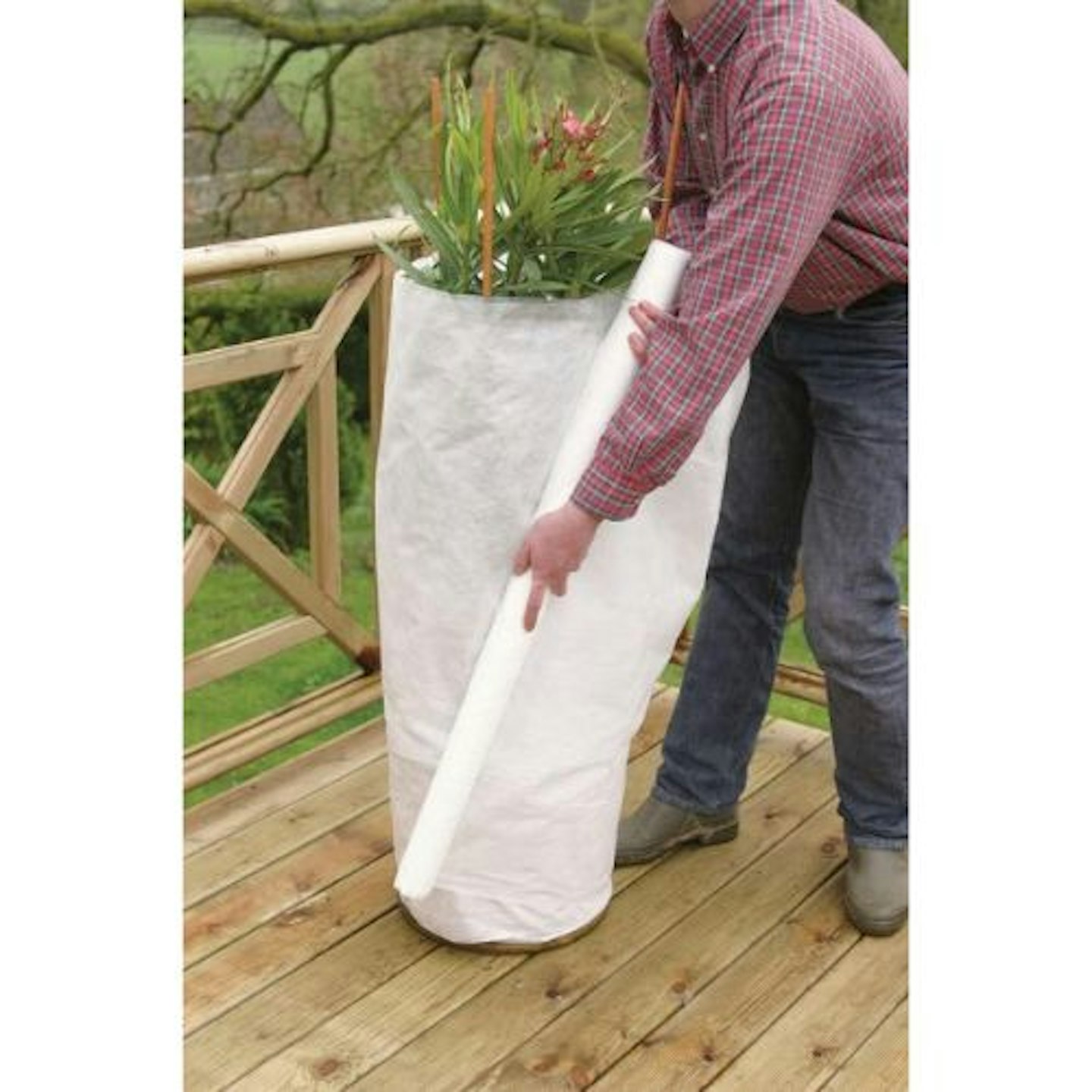
Fleece is a contemporary choice that's especially suited to plants that require particularly robust protection from frost, sleet, ice, and snow. This can also shield against damage from birds and insects. This fleece is lightweight yet strong and can be cut to the size and shape you require directly from the roll which measures in at 20 metres by one metre. This fleece has a clever porous balance which allows for direct watering, but also manages to help retain moisture.
Customer review: "Excellent product and perfect for protecting my small rhododendron and other immature shrubs from the frost."
Pros
- Lightweight
- Porous
Cons
- Only available in white
Best for trees
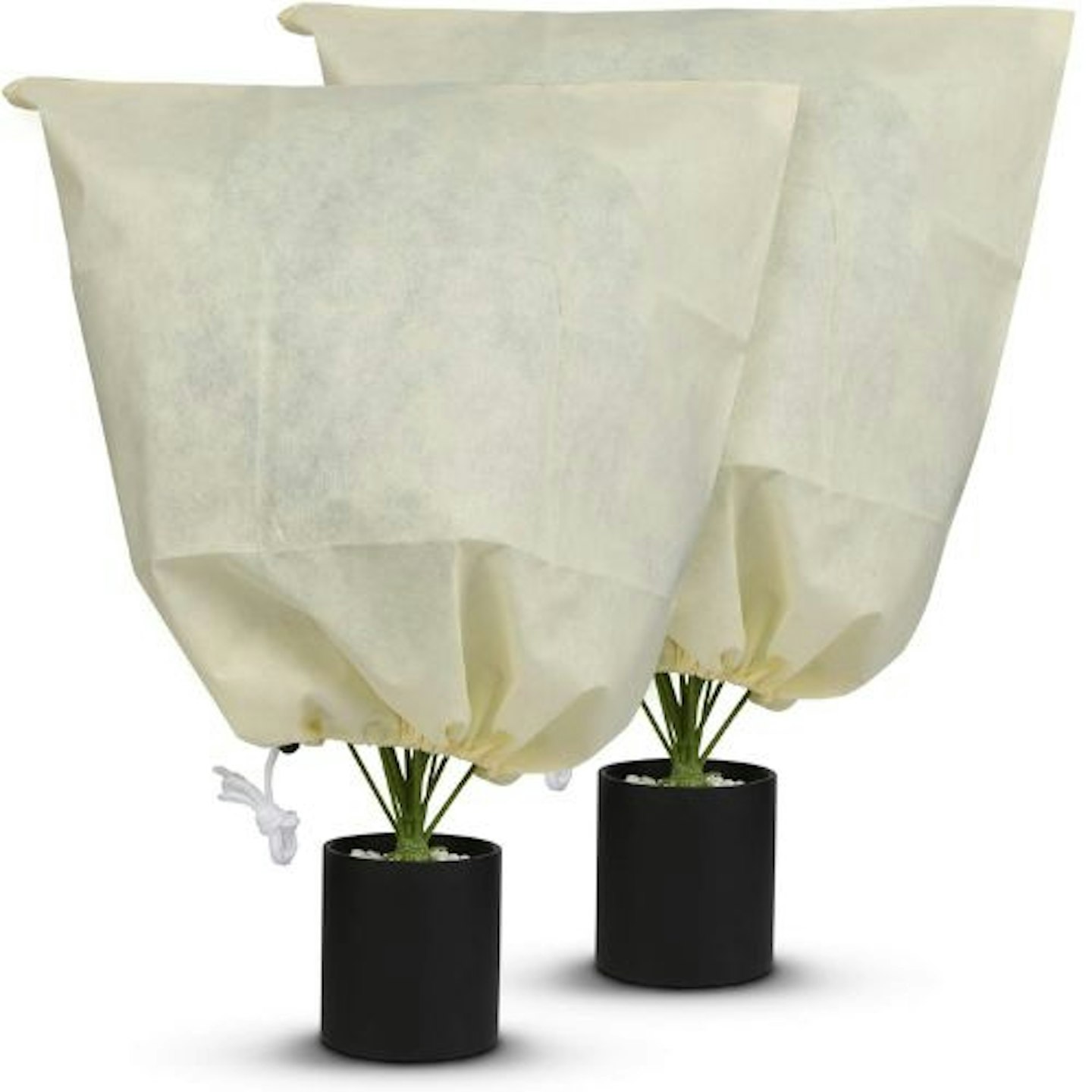
If you have entire trees or bushes that need protecting from the winter weather a savvy solution is to use a specially designed cover that can be simply slipped over the tree's branches to shield them from the elements. This popular MIXC option has a handy side zip to make getting the cover in position easier, then a drawstring closure keeps the cover securely in place. This comes in a range of sizes, allows up to 60% light transmittance, and can protect in temperatures as low as minus 8 degrees.
Customer review: "Good sized cover that goes over my camellia bush to give protection from frost. Zip fastening to keep it secure. Very pleased with quality."
Pros
- Zip closure
- Drawstring at base
Cons
- Not visually attractive
Best polytunnel
A polytunnel is an ever-popular shielding device used by allotment owners and veggie bed keepers to protect their produce. They can also be used to cover flowering plants and shrubs in the winter months, and seedlings in spring. This particular polytunnel offers three metres of protection formed from durable polythene which allows light and air through, but keeps off birds and pests, and protects from cold. If you need more than three metres, these can easily be joined together to create a longer length.
Customer review: "Was easy to assemble and use. Put it to work straight away on our allotment and it is doing a good job protecting our cabbages and lettuces."
Pros
- Multiple tunnels can be linked
- Can be cut to size
Cons
- Stakes not included
Best pop up plant cover
For those who have a small amount of pots, or a particular patch of plants they want to cover, a simple pop up PVC enclosure will meet those protective needs. This has a super-convenient pop up design so you can employ it when you need it and fold it down for simple storage when you don't. This transparent dome measures in at 70 by 70 by 80cm and has a handy zipped window for easy access to whatever is inside. This comes complete with four fixing stakes to secure it in place.
Customer review: "Brought this for a plant I have in the garden that doesn't like a lot of water during winter… So far so good, still there after some harsh winds, the plant is looking happy and it hasn't ripped at all."
Pros
- Pop up design
- Stakes included
Cons
- Limited capacity
Best for planters
We've awarded these covers a "Best for planters" award, but they are a very versatile option that could also be used on hanging baskets, window boxes, smaller shrubs and bushes, and even over a small group of pots. These come in a range of sizes to suit your needs, and in various pack sizes if you're in need of multiple covers. These are made from 50GSM polypropylene fleece and boast both zipped sides and drawstring closures for easy fitting and secure fastening.
Customer review: "A very good size, easily fit two plant pots in. Good quality fabric and the zip at the side made it easy to fit over the plants without breaking the stems. There is also a drawstring at the bottom to ensure they are securely fitted to the pots so don't come off when windy."
Pros
- 50 GSM fleece
- Multipurpose
Cons
- Not decorative
Best cloche
For anyone who values aesthetics alongside practicality, an old-fashioned cloche is a lovely option to add a quaint, antique touch to your outside space. This patented dome shape has been used by gardeners for decades to protect and warm all kind of plants, both in pots and in the ground. The manufacturer Haxnicks describes these cloches as having the "pleasing appearance" of glass bell jars, but a practical construction, made from APET plastics. There's a handy built-in top vent for air flow and humidity control.
Customer review: "These fit perfectly over the larger plants that will be left in the ground over winter, so easy. Better than fleece."
Pros
- Attractive design
- Highly portable
Cons
- Pricier than fleece
Best cold frame
A cold frame is another classic solution for plant protection. This box-shaped structure can stop your plants getting too chilly, and stop animals and common garden pests from getting at your growth. This can be used for flowers, smaller vegetables, and even herbs. There is some construction required with this particular kit, but once you're done you have a dedicated space for your plants to sit in safety and soak up the winter sun.
Customer review: "Bought this to house my geraniums and some other plants that need protecting from the frost. So far it has done the job on the mornings we have had frost."
Pros
- Translucent panels
- Hinged door
Cons
- Large footprint
Best compact greenhouse
Arguably a more serious solution than a simple plant cover, a compact greenhouse is worth considering if you're a keen gardener and want to cultivate seeds and seedlings during the winter months to plant out in sunnier times. This small greenhouse has a sturdy steel frame with a PE cover to protect your plants from the elements. This solution is portable, so you can be moved around your outside space and then staked at the sides for stability.
Customer review: "So easy to assemble, took about 10 minutes and very straightforward. Nice deep shelves. Looks pretty smart, despite being plastic. Very pleased, great value for money."
Pros
- Three shelves
- Steel frame
Cons
- Construction required
Five easy tips to get your garden ready for winter
Aside from investing in some plant covers, there are a few simple steps you can take to make your outside space winter-ready…
Clear out
There are some garden jobs you'll thank yourself for doing come spring. Emptying planters and pots of annuals, such as marigolds or sunflowers that only last one season, is definitely one of them. Clear out the pots of dead foliage and roots and store the containers somewhere dry. Then, when it comes to the exciting task of planting out your fresh annuals you'll have a tidy stack of pots to work with.
Move out
Garden plants that go dormant over the winter period such as begonias, fuchsias, and dahlias, can benefit from being moved into a greenhouse, shed, or garage, or at least put in a more sheltered position. This will ensure they can thrive again once the warmer weather arrives.
Stake out
It's not just frost you need to think about when considering how the winter weather will affect your garden, wind can also do damage. If you have plants, shrubs or smaller trees that would be susceptible to robust gusts, staking them is advisable to give them a stronger structure.
Mulch out
There are many benefits for using mulch in your garden year round, but adding a layer of mulch to your flower and vegetable beds and to the top of the pots and planters of your hardier plants is a wise winter task. If you're savvy enough to have your own source of compost then great, if not, a good quality garden centre straw-based mulch or peat-free compost will also do the trick.
Help out
Benevolent gardeners can help out more than just plants during the colder months. Garden birds can greatly benefit from a regular source of food, courtesy of a strategically placed bird feeder, and even somewhere warm and cosy to shelter. Encouraging birds in your garden over the winter months will do you all kinds of favours later in the year when they will peck at certain weeds, eat pesky pests, and can even help pollinate flowers.
Amy-Mae Turner is a Commerce Content Writer for Modern Gardens, Yours, Take A Break Pets, and A Modern Kitchen. When she's not pottering in the garden or mucking around in the kitchen, she can be found having doggy cuddles with her two beloved cockapoochis.


